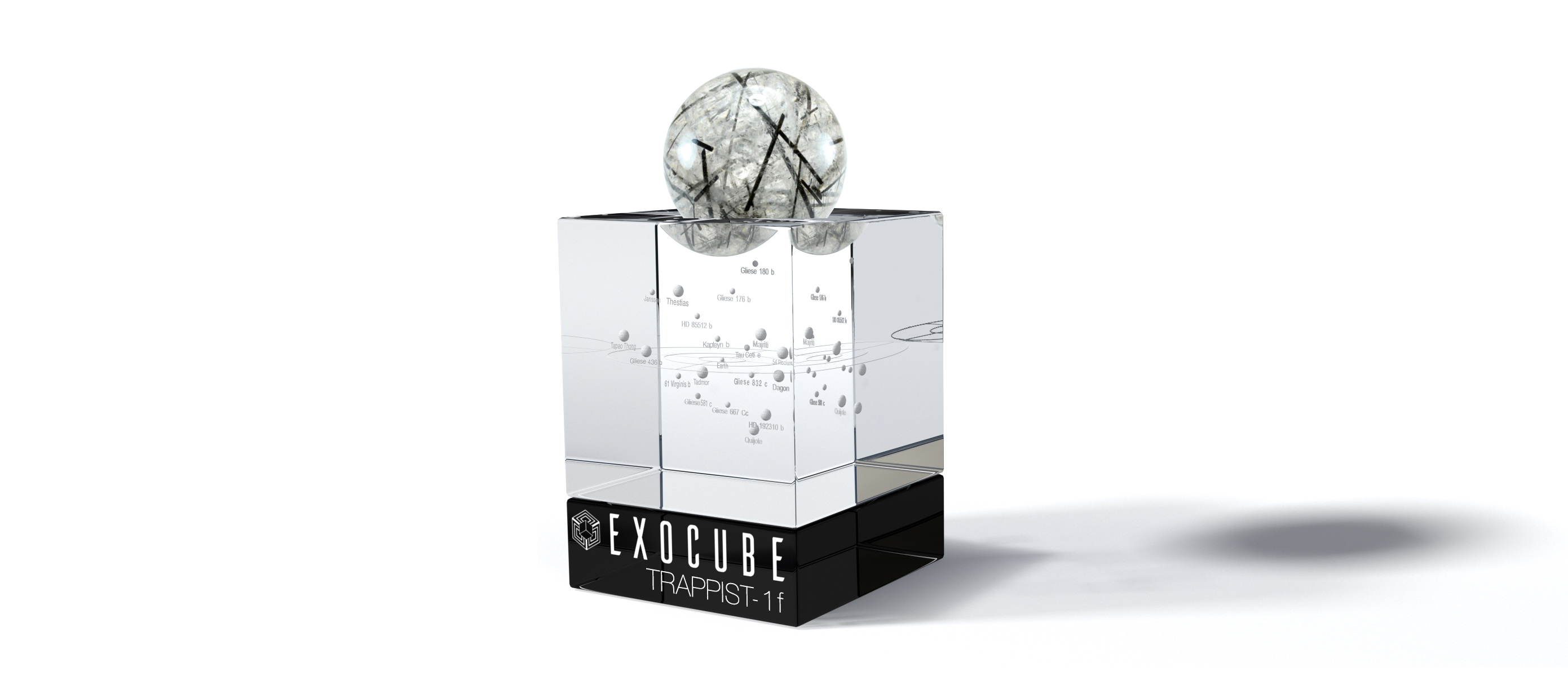'ExoCube' Kickstarter Wants Your Help in the Search for Alien Life

A team of astronomers needs your help with the hunt for alien life, and they're offering some pretty cool exoplanet swag in return.
The PLANETS Foundation is building a telescope that will search for life outside the solar system, and the foundation launched a Kickstarter campaign to help fund its efforts. Donors to the campaign will receive a unique laser-engraved 3D glass map of nearby exoplanets called the ExoCube.
Along with the ExoCube, the campaign is offering 25 different types of mineral spheres that represent potentially habitable planets, including Proxima b and TRAPPIST-1f.
With the ExoCube-LED option, you can even turn your ExoCube into a little interstellar rave. The added LED light cycles through a series of colors, adding flair to the sculpture while illuminating the details of the engravings inside. [10 Exoplanets That Could Host Alien Life]
The Kickstarter campaign will end Monday (May 22), so get your ExoCube while you still can. But don't worry if you miss your chance to get your hands on one of them now. There will be similar Kickstarters in the future, Kevin Lewis, a member of the campaign, told Space.com. "We are currently working on new incarnations of the ExoCube as well as creating brand-new astronomy and exoplanet-related products," he said.
Proceeds from this campaign will help the PLANETS Foundation develop new technologies to search for alien life, including the new PLANETS (Polarized Light from Atmospheres of Nearby ExtraTerrestrial Systems) telescope that is currently under construction on Haleakala, a volcano on the island of Maui, Hawaii.
Specially designed to search for life outside the solar system, the PLANETS telescope will examine exoplanet atmospheres and biosignatures – chemicals or compounds that life could produce, such as oxygen, water and methane.
Get the Space.com Newsletter
Breaking space news, the latest updates on rocket launches, skywatching events and more!
The telescope is scheduled to be completed in 2019 and will cost a total of $4 million to build. So far, the group has raised $3.5 million through research grants, and the remaining $500,000 "will most likely come in the form of additional research grants plus public support like this Kickstarter," Lewis said. This Kickstarter proved a roaring success, surpassing its $20,000 goal with an extra $15,000 (and counting).
Email Hanneke Weitering at hweitering@space.com or follow her @hannekescience. Follow us @Spacedotcom, Facebook and Google+. Original article on Space.com.
Join our Space Forums to keep talking space on the latest missions, night sky and more! And if you have a news tip, correction or comment, let us know at: community@space.com.

Hanneke Weitering is a multimedia journalist in the Pacific Northwest reporting on the future of aviation at FutureFlight.aero and Aviation International News and was previously the Editor for Spaceflight and Astronomy news here at Space.com. As an editor with over 10 years of experience in science journalism she has previously written for Scholastic Classroom Magazines, MedPage Today and The Joint Institute for Computational Sciences at Oak Ridge National Laboratory. After studying physics at the University of Tennessee in her hometown of Knoxville, she earned her graduate degree in Science, Health and Environmental Reporting (SHERP) from New York University. Hanneke joined the Space.com team in 2016 as a staff writer and producer, covering topics including spaceflight and astronomy. She currently lives in Seattle, home of the Space Needle, with her cat and two snakes. In her spare time, Hanneke enjoys exploring the Rocky Mountains, basking in nature and looking for dark skies to gaze at the cosmos.











